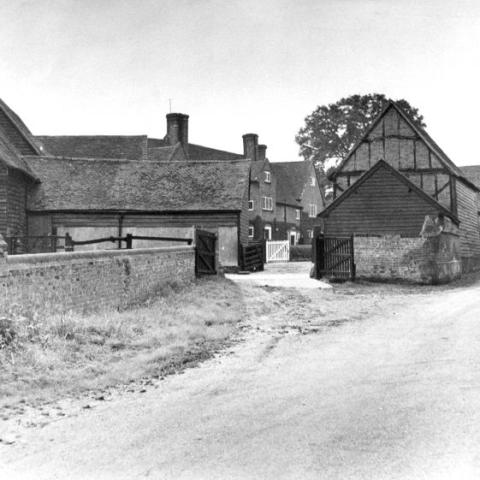Response attached at the bottom of the page - provided by Sarah Wynn - Managing Director for ADAS Climate and Sustainability.
Context: Will Dickinson farms in Hertfordshire and has a mixed farm, using the farm yard manure for arable crop benefit for generations.
During my visit to cross farm, Will and I discussed a number of things relating to different management practices in the context of Net Zero and carbon footprint. At the time of my visit, there were sheep grazing a catch crop. Will explained “With the wetter autumns over the last few years, we have been able to grow catch crops of stubble turnips that we let to a neighbour to graze his sheep on for a short time over winter. These are followed by a spring cash crop.”
In addition, Will uses digestate from a food waste anaerobic digestor plant nearby. This has enabled him to reduce the use of fossil fuel derived fertilisers, particularly Ammonium Nitrate. He says “We hope that the use of digestate will have a number of benefits including to our carbon footprint.”
Will’s Questions for the FarmPEP community – Please comment any responses or thoughts:
Calculating the carbon footprint of a farm is a complex problem. What are the current metrics that exist for doing this and what are their shortcomings?
Is there a need for a standardised metric?
What are the gaps in the current scientific understanding of agricultural emissions calculating?
Will feels that confidence in a metric has a huge impact on farmer decision making relating to Net Zero. He is “concerned that, as we discover more about the whole Carbon accounting system, metrics will change and work that appears sacrosanct just now will be dismissed in times to come.” It may also have an effect on access to markets and confidence in carbon credits from other commercial entities.




Discussion
There are a number of problems with a farm based calculations of greenhouse gas emissions:
1. For some of the calculations the inputs are complex and detail is not available. This applies particularly to some of the livestock calculations where details of for example weights (and weight change) and feeding regime are needed.
2. For what are know as scope 3 emissions (those that occur off the farm for example in the manufacture of feed and fertiliser) the calculation is likely to be historic and non specific. For example soya may have a very low foot print or a high one depending on origin and fertiliser made via electrolysis of water using hydroelectric power will have a radically different foot print from where the hydrogen is obtained from splitting gas (byproduct is CO2) and gas is used for the power (also releasing CO2). (and so on)
3. There are basic errors. Few of the calculators use the current best practice for assessing nitrous oxide release as adopted for the national inventory (if rainfall is not an input the calculation is out of date)
4. The conversion of the impact of methane and nitrous oxide to carbon dioxide may be based on old metrics - as the legislation is. Methane is also controversial because of its relative short life but massive short term impact
5. The calculations are crude (many of the metrics are a nice round 10% or 20%). The most definitive calculation is that used to compile the UK national greenhouse gas inventory. This is based on guidance provided by the UN panel for Climate Change but includes different metrics to suit the sophistication of the assessing country. Tier 3 calculations are country specific and supported by national evidence.
It is important to understand that net zero while a laudable objective is not sustainable in food production. No carbon sinks in agriculture continue to accumulate indefinitely and eventually another tree has to be planted (to replace another sheep).
While the industry is obsessed with calculation the answers are often almost meaningless - IF the objective is reduction in greenhouse gas emissions rather than compliance or buyer request. It is much better to focus on specific unambiguous actions such as: increasing efficiency (increase the lambing percentage and reduce the culling rate of the ewes), reducing fertiliser use by ensuring the sward contains legumes, use solar power (or that AD source) to run farm vehicles and ATV, consider methane inhibitor feed supplements. Cultivations are often ambiguous since reduced cultivation may increase the store carbon but it is easily lost and the rate of gain declines, and might even increase nitrous oxide release in some situations. Where you buy in inputs consider the source - there probably won't be a difference in price.